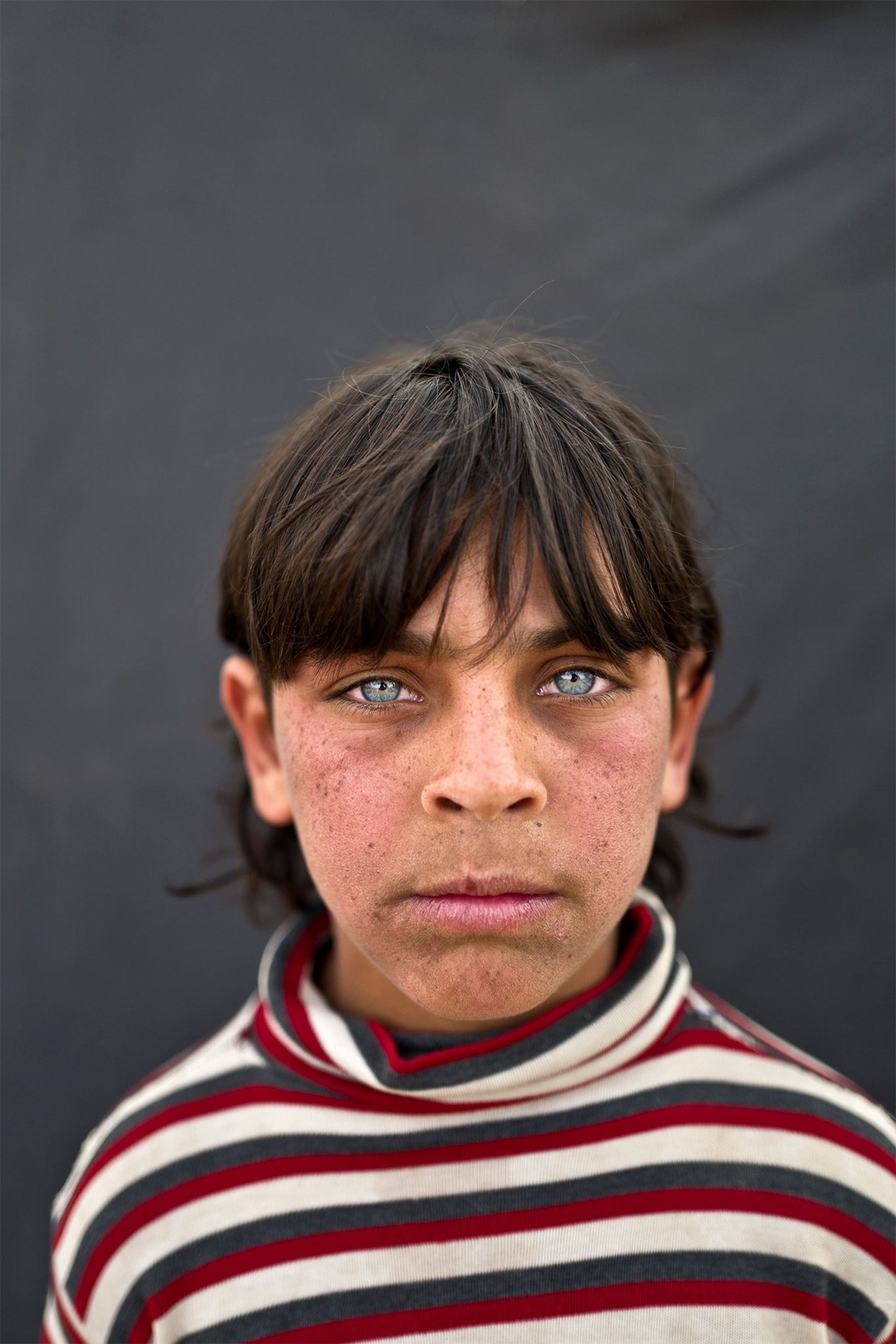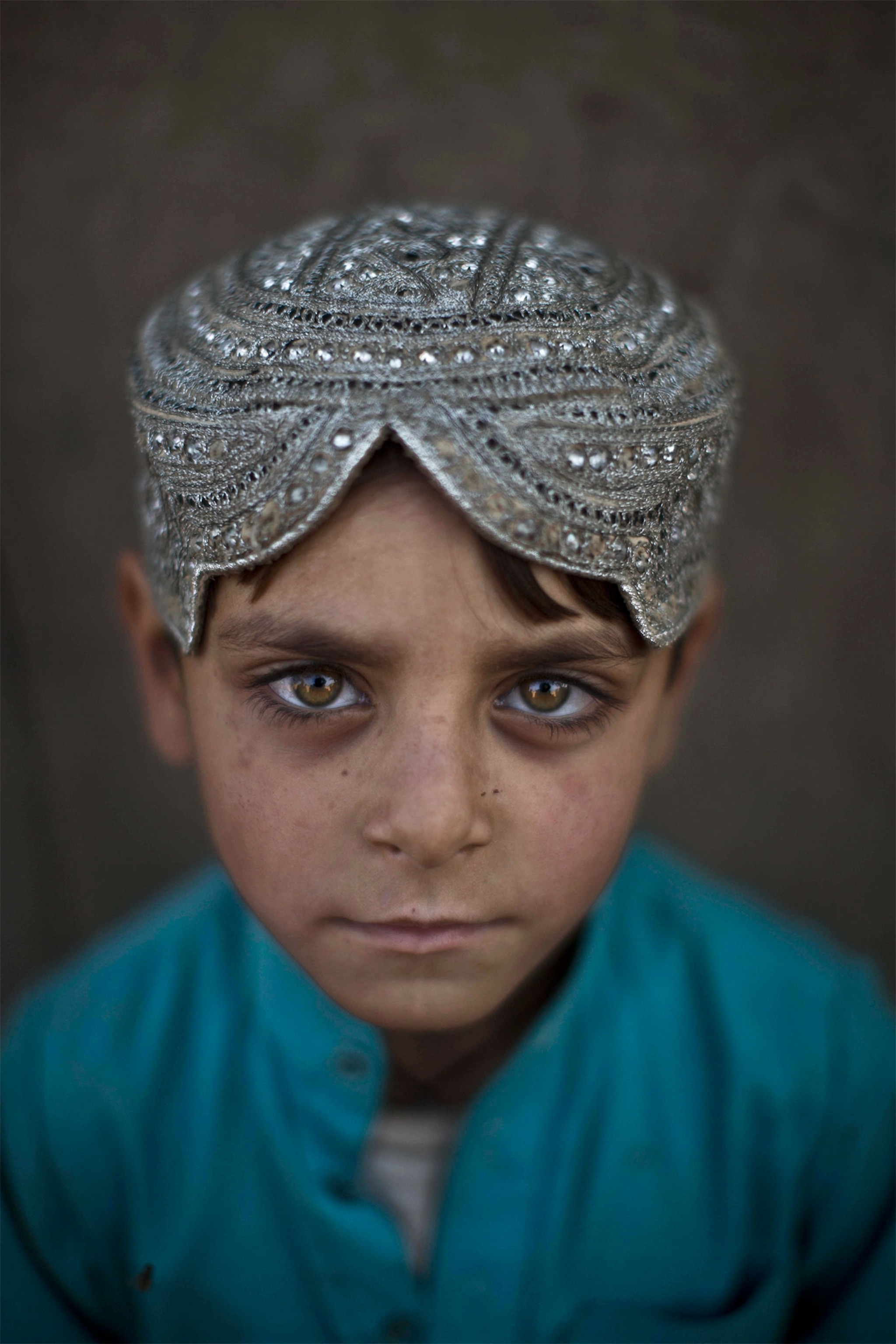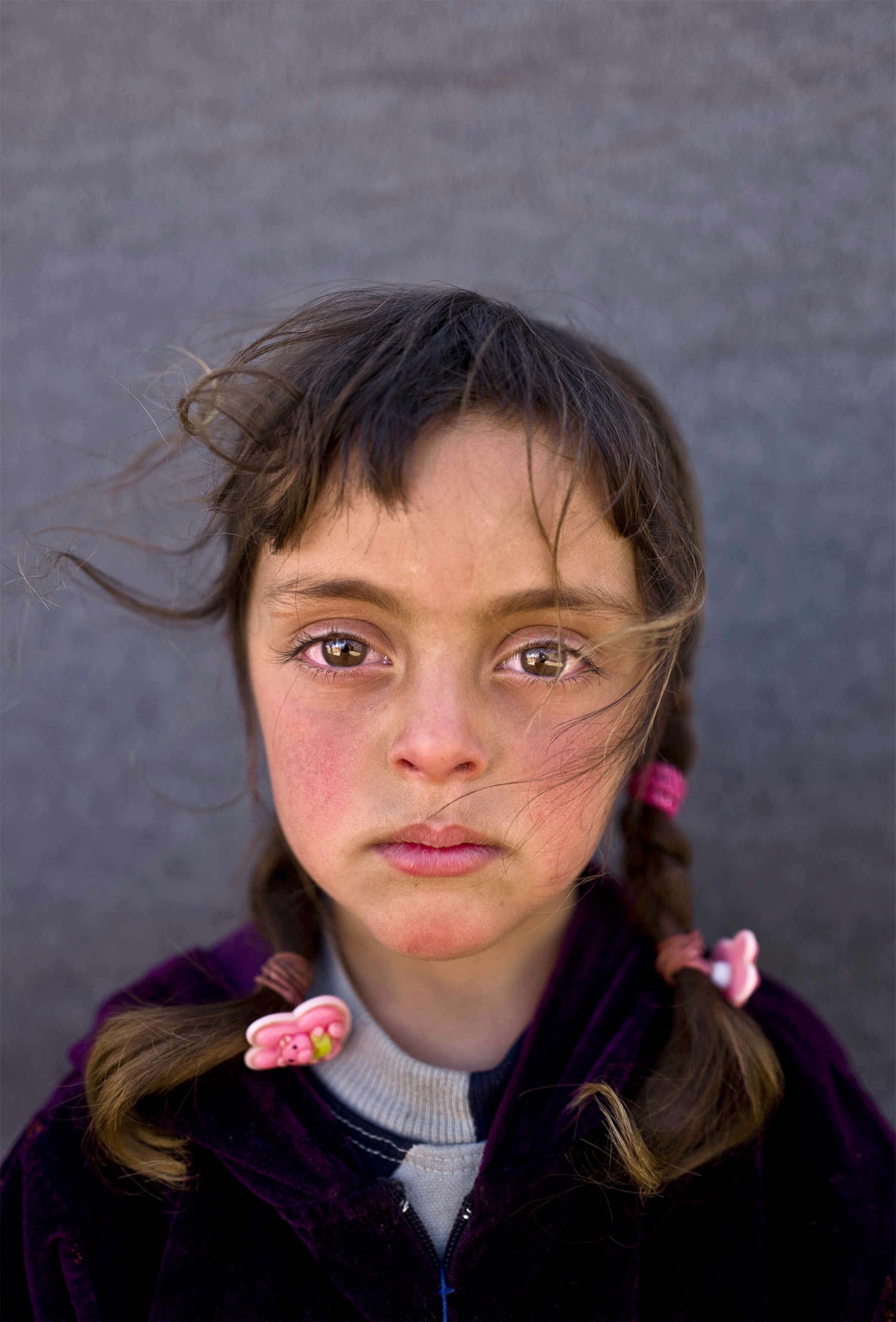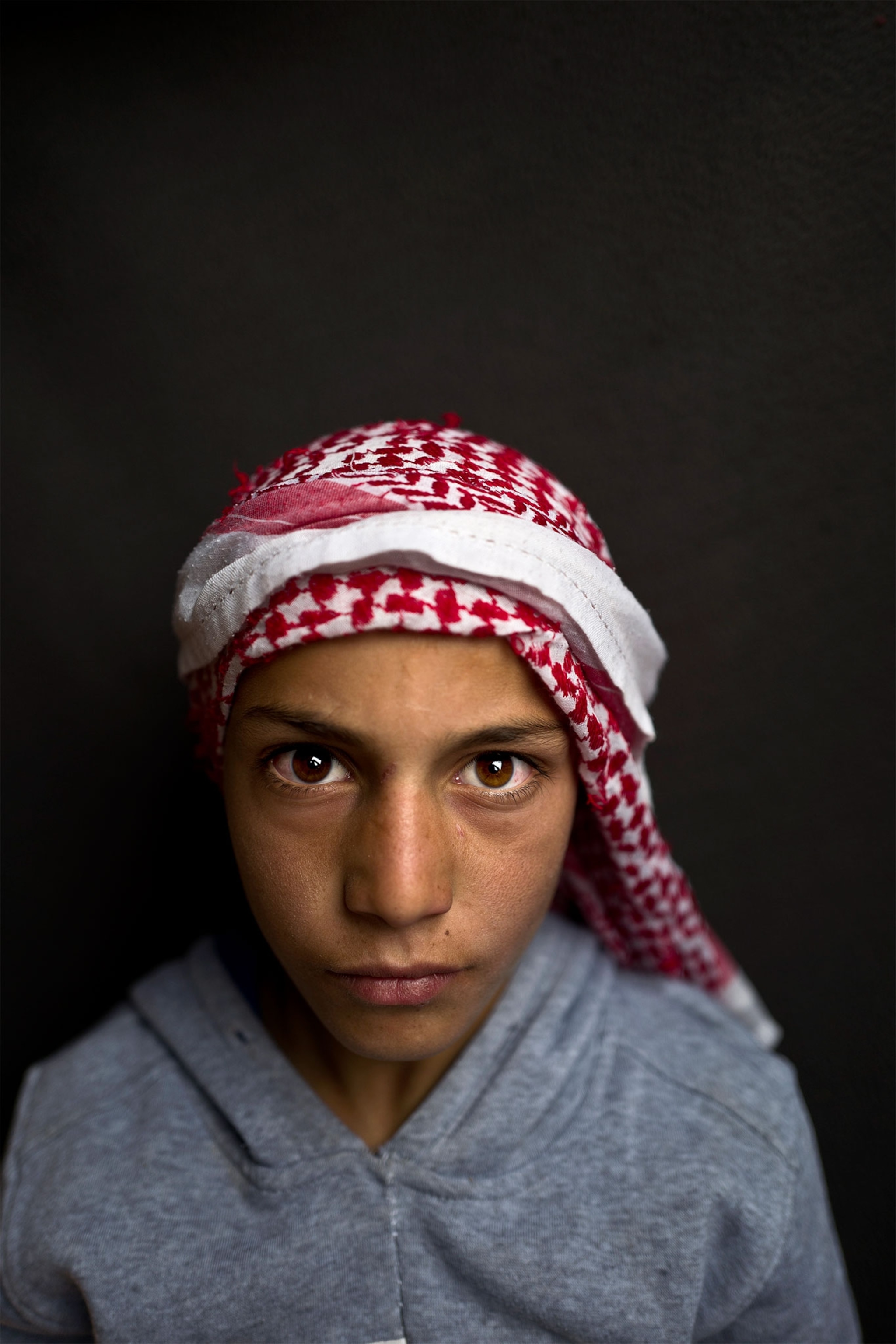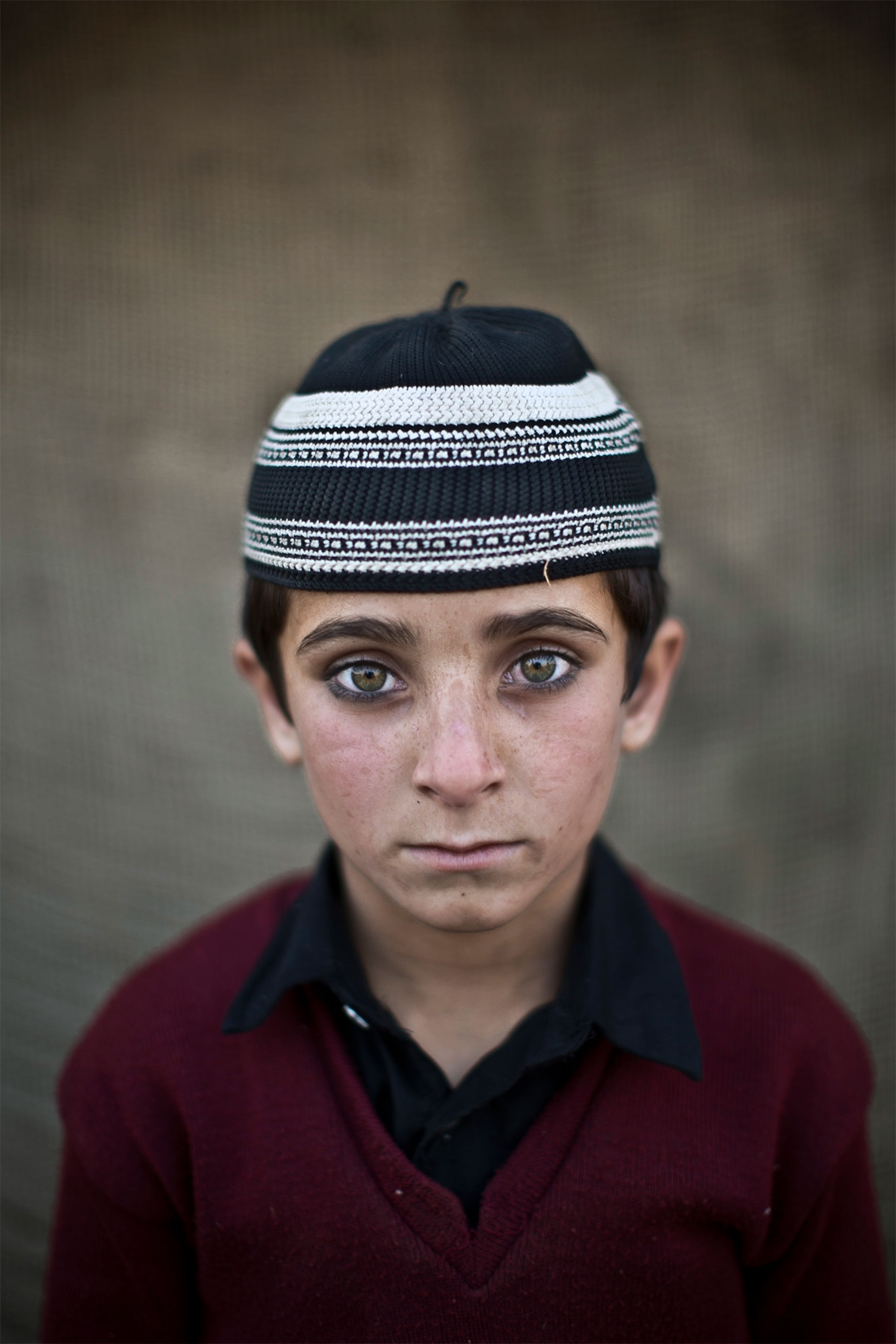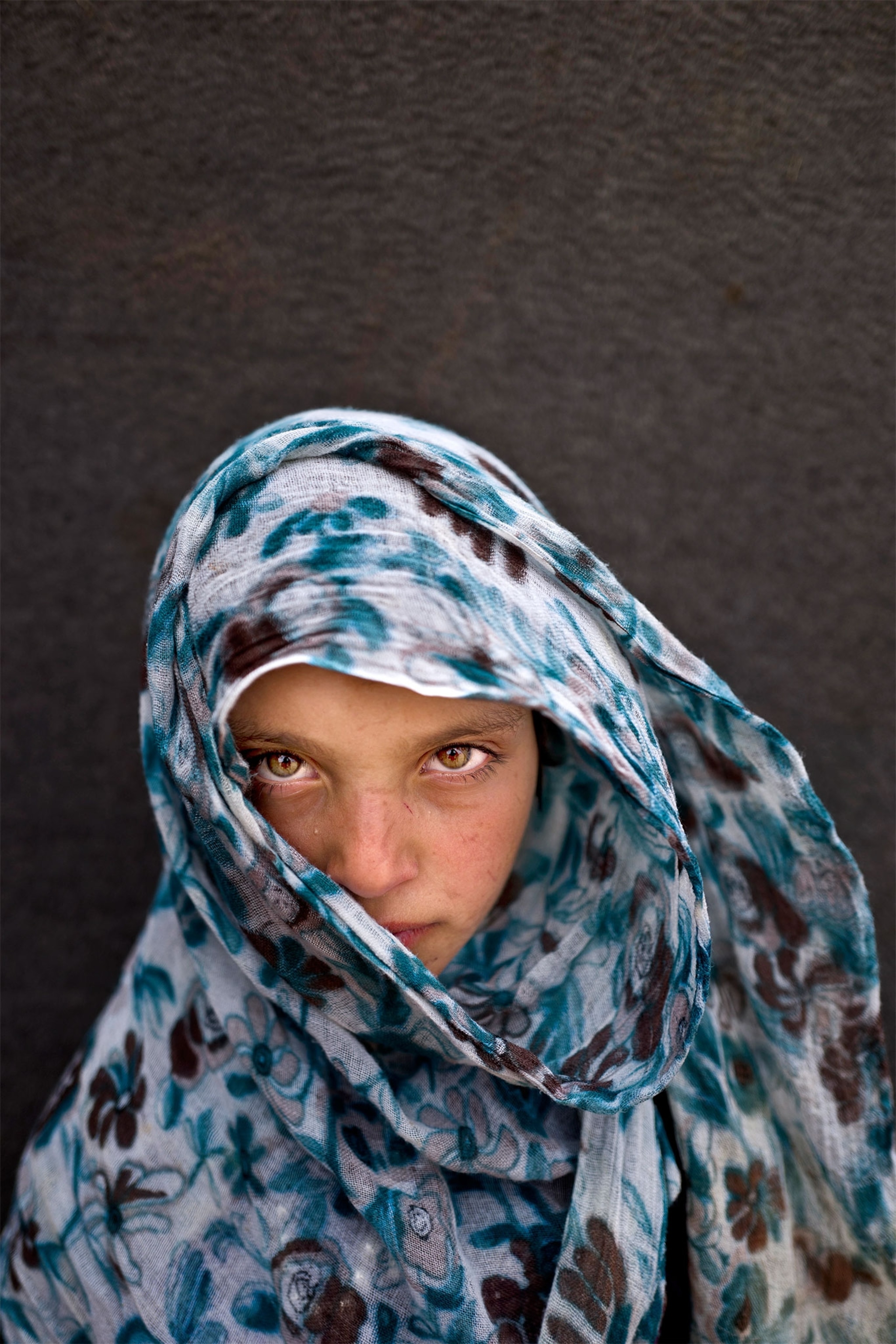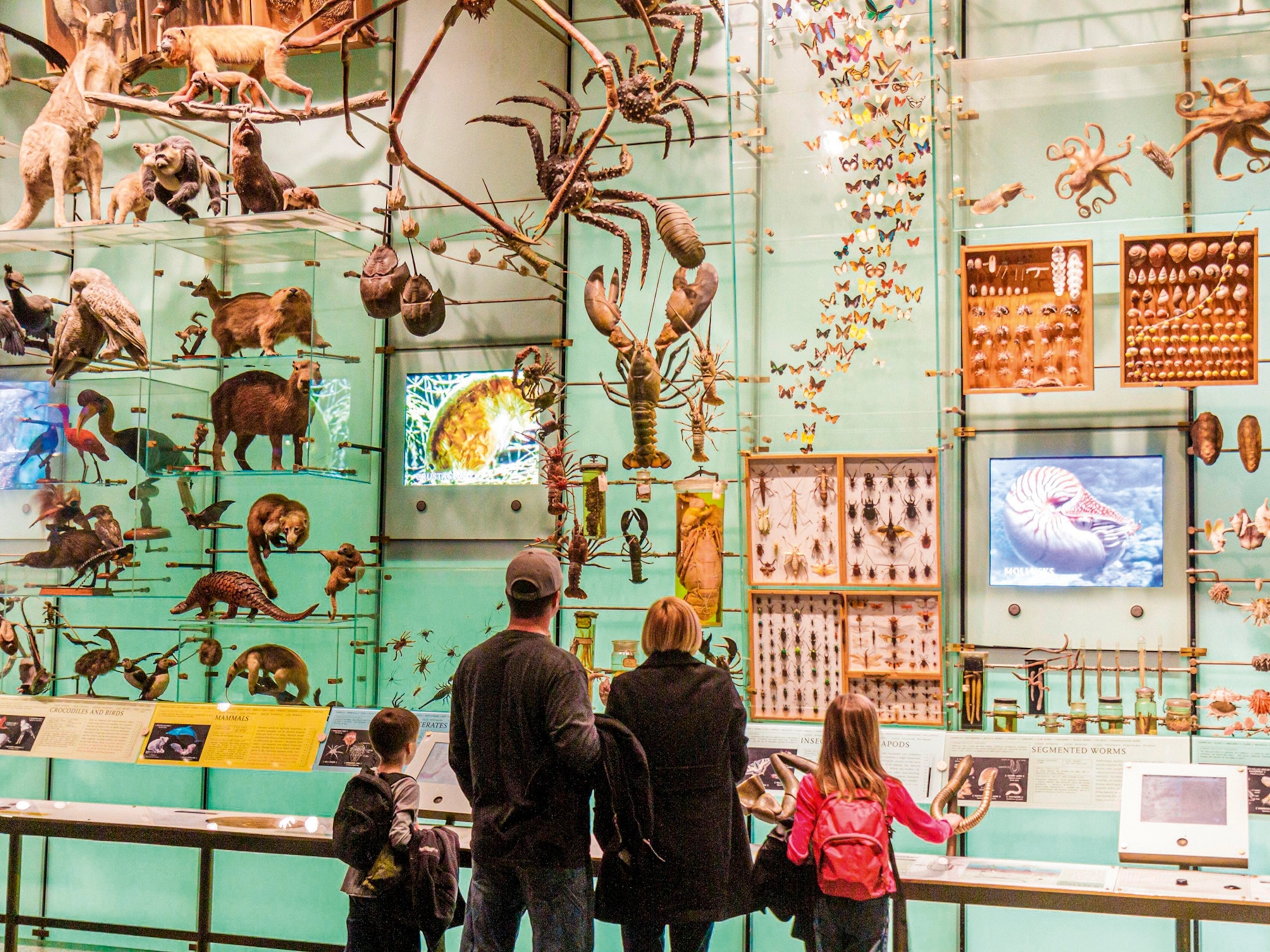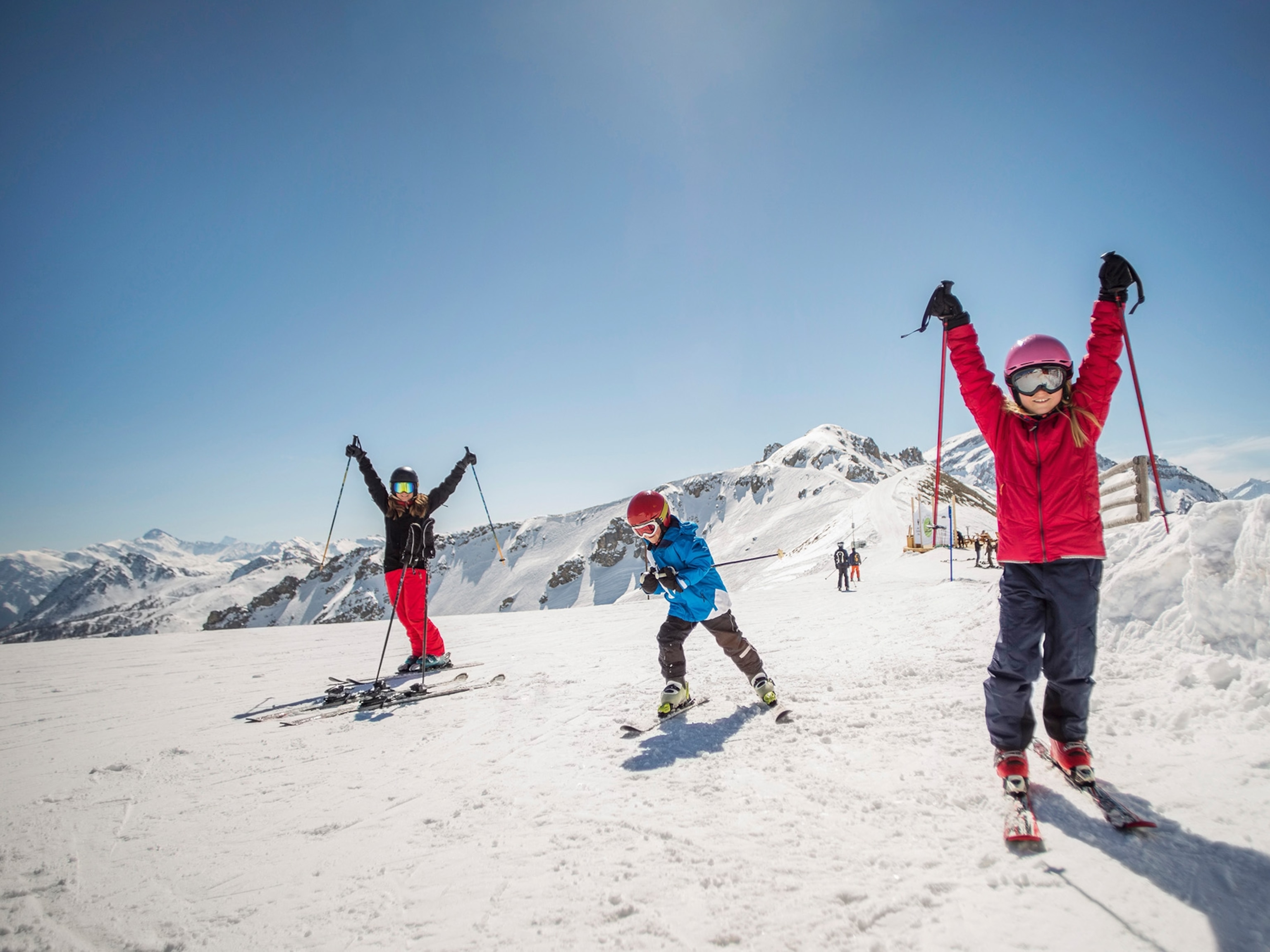Look Into the Eyes of Refugee Children
Photographer Muhammed Muheisen wants to introduce the world to the children who grow up fleeing war.
The number of people forcibly displaced from their homes is now roughly equivalent to the population of France or the United Kingdom, according to a new report released by the United Nations on Monday.
According to the UN, as of the end of 2015, 65.3 million people worldwide have been displaced, marking the first time in history that population has exceeded 60 million. Nearly 41 million of those counted are displaced within their own countries.
The report cites three causes for this increase, up from 59.5 million at the end of 2014. First, conflicts are lasting longer than ever before. Second, new conflicts are occurring more frequently. And third, they write, “The rate at which solutions are being found for refugees and internally displaced people has been on a falling trend since the end of the Cold War.” Simply put, there are more problems than there are immediate solutions.
The majority of the displaced—51 percent—are children, according to the report. Photographer Muhammed Muheisen has spent time with some of the 2.4 million refugee children who come from Syria, including five-year-old Zahra, pictured in the gallery above.
Zahra doesn’t talk much, but when she does, the only things she says are about war, turmoil, upheaval, and whether or not she’ll ever get to return to her home.
Muheisen, a two-time Pulitzer Prize winner and Associated Press chief photographer for the Middle East, has been photographing refugees in the Middle East for the past few years, concentrating on the children affected. “I believe they are the real victims of the conflict,” he says. “I like to introduce the public to the names of the people that I photograph because it brings them closer. It's more than just numbers and refugees and Syria and Afghanistan. The people start to be remembered by their names.”
Muheisen used to live in Pakistan, where he regularly photographed Afghan refugees. Last fall, he moved to Amman, Jordan, and he has gotten to know the Syrian children who live in nearby refugee camps.
“They're children in age, but they're not, in a way. They're grown up," Muheisen says. “I looked at a five-year-old girl's face,” he says, “and I touched my face—and my face was softer than hers, for God's sake. So that's why I came close with my camera, to show all these details in their faces.”
During the day, the children’s parents and older siblings work at nearby farms. Sometimes the younger children go along, other times, they fend for themselves. They have no schools, toys, radios, or TVs. But Muheisen says the children are friendly and get along with each other. “I believe that the hard life they have, it makes them closer to each other,” he says.
The following 12 portraits of refugee children were taken in Jordan in mid-March 2016, and in Pakistan in late 2013 and early 2014. You will be compelled to make eye contact with them, and it’s hard not to feel unsettled—the intense gazes are so unrelentingly personal. “Each of them has a beauty of their own,” Muheisen says. “The eyes of children are innocent. They can't hide, they can't lie, they can't fake. They just stand in front of the camera like adults, and they look straight into your lens, and if you're lucky enough to have time before they run away, you capture the moment.”


